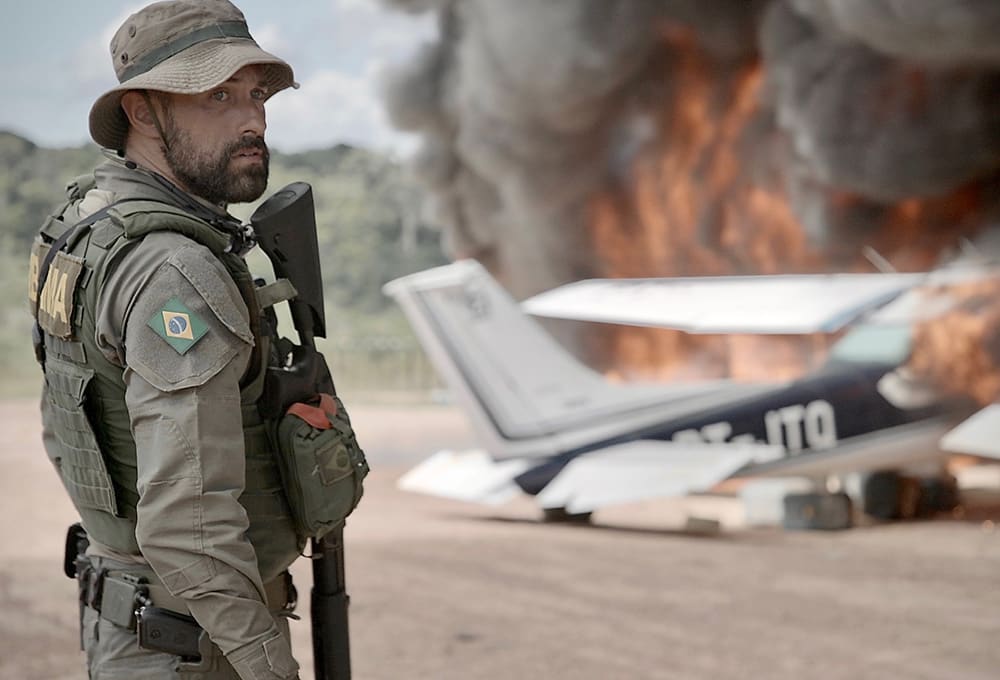Dr. Heidi Sevestre is a glaciologist who has dedicated her career to studying the world’s ice landscapes, from the towering glaciers of the Arctic to the vast ice sheets of Antarctica. Raised in France with a passion for the natural world, Sevestre’s fascination with glaciers led her to pursue a Ph.D. in glaciology at the University of Oslo. Her research focuses on glacier dynamics and how these massive ice bodies respond to climate change. Over the years, Sevestre has emerged as a leading voice in climate science, contributing essential data that helps the world understand the rapidly changing Arctic environment.
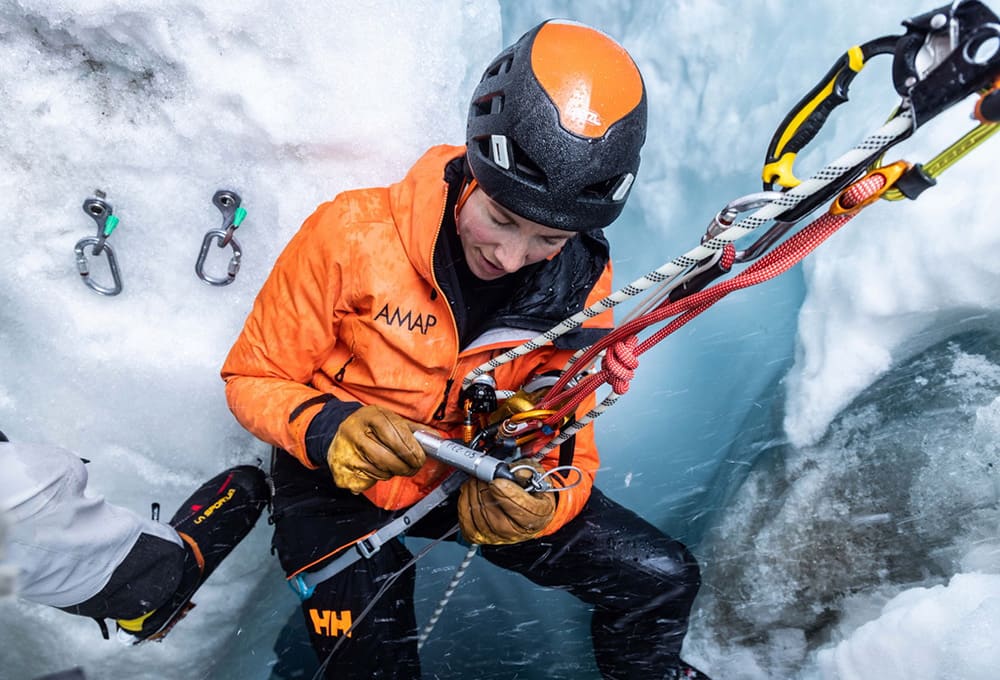
In the documentary series “Arctic Ascent with Alex Honnold,” produced for Disney+, Dr. Heidi Sevestre played a crucial role as the scientific expert on the team. The series follows renowned climber Alex Honnold and his fellow adventurers as they tackle Greenland’s remote and rugged peaks, with Sevestre providing vital scientific insights throughout the expedition. While the climbers were focused on summiting the towering Ingmikortilaq seacliff, Sevestre’s mission was to study the surrounding ice, collecting data that would contribute to a deeper understanding of how climate change is impacting this fragile region.
Sevestre’s involvement in the expedition was not just about gathering data; it was about bringing scientific rigor to an extreme environment. She worked closely with the team, including security expert Aldo Kane and Greenlandic guide Adam Kjeldsen, to ensure that the scientific objectives were met without compromising the safety or integrity of the climb. Sevestre’s work on the ice fields of Greenland allowed her to capture real-time measurements of ice thickness and density, providing invaluable data for climate models.
Dr. Heidi Sevestre is not just a scientist; she is also a passionate advocate for communicating the realities of climate change to a broader audience. Her work in the Arctic is as much about raising awareness as it is about conducting research. By participating in expeditions like “Arctic Ascent with Alex Honnold,” Sevestre brings her scientific expertise to the forefront of popular media, using these platforms to educate the public on the urgent need to address climate change.
Sevestre’s approach to science communication is dynamic and engaging. She has collaborated with organizations like National Geographic to bring her research to life through documentaries, articles, and public speaking events. Her ability to explain complex glaciological concepts in a way that resonates with people from all walks of life has made her a prominent figure in environmental advocacy. Through her work, Sevestre strives to make the science of climate change accessible, highlighting the direct connection between glacial melt and global climate patterns.
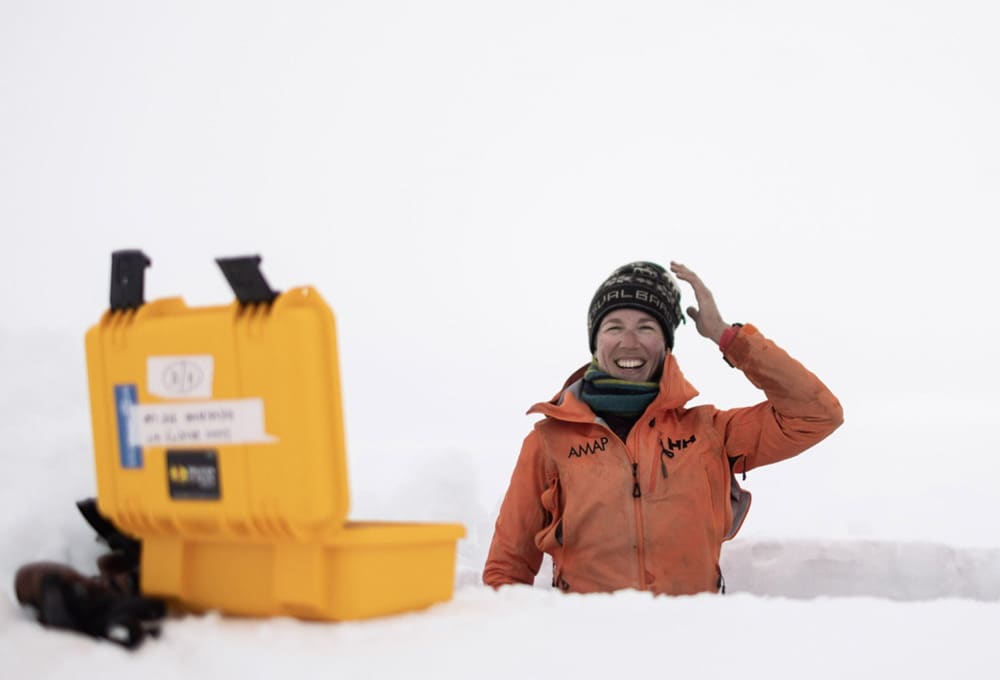
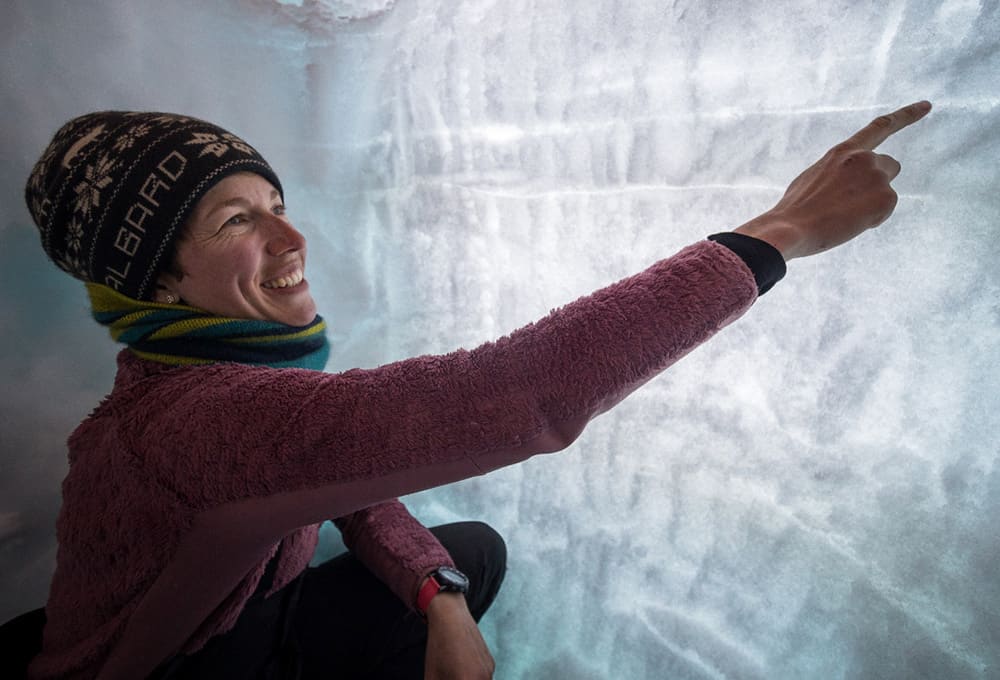
Dr. Heidi Sevestre’s career is marked by her relentless commitment to understanding and protecting the world’s glaciers. Her work on “Arctic Ascent with Alex Honnold” is a reflection of her dual role as a scientist and advocate. Each data point she collects, each sample she analyzes, contributes to a larger narrative about the future of our planet. Sevestre’s efforts underscore the critical need for immediate action to mitigate the effects of climate change, particularly in vulnerable regions like the Arctic.
Her legacy extends beyond her scientific contributions. Sevestre is also shaping the next generation of climate scientists, mentoring young researchers and encouraging them to approach science with both rigor and passion. Her work is a powerful reminder that the fight against climate change requires both data and dialogue, and that every expedition is an opportunity to advance both.
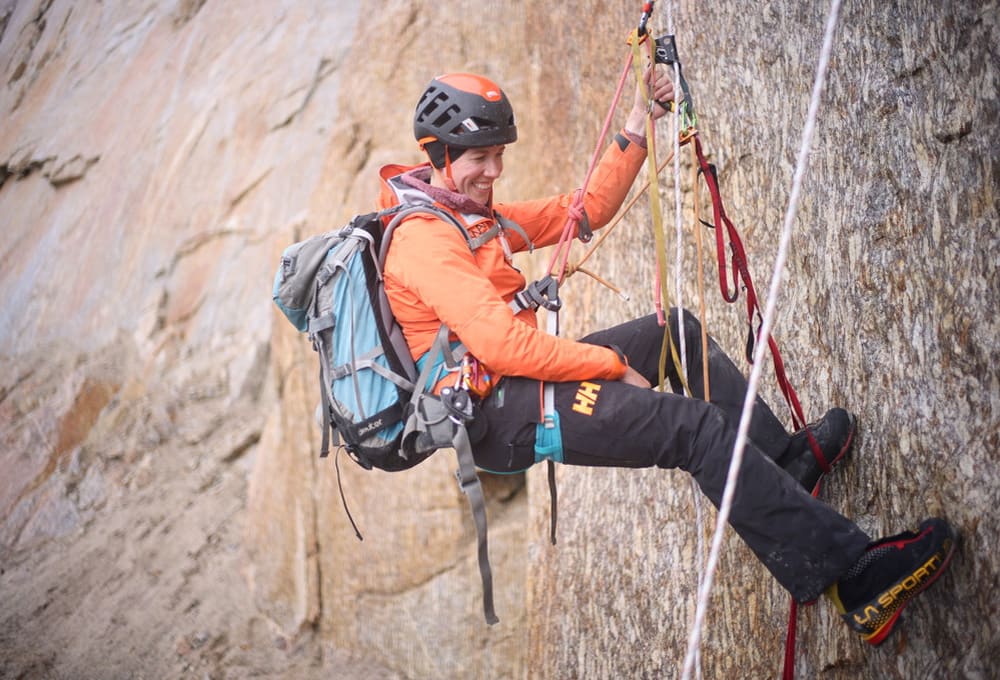
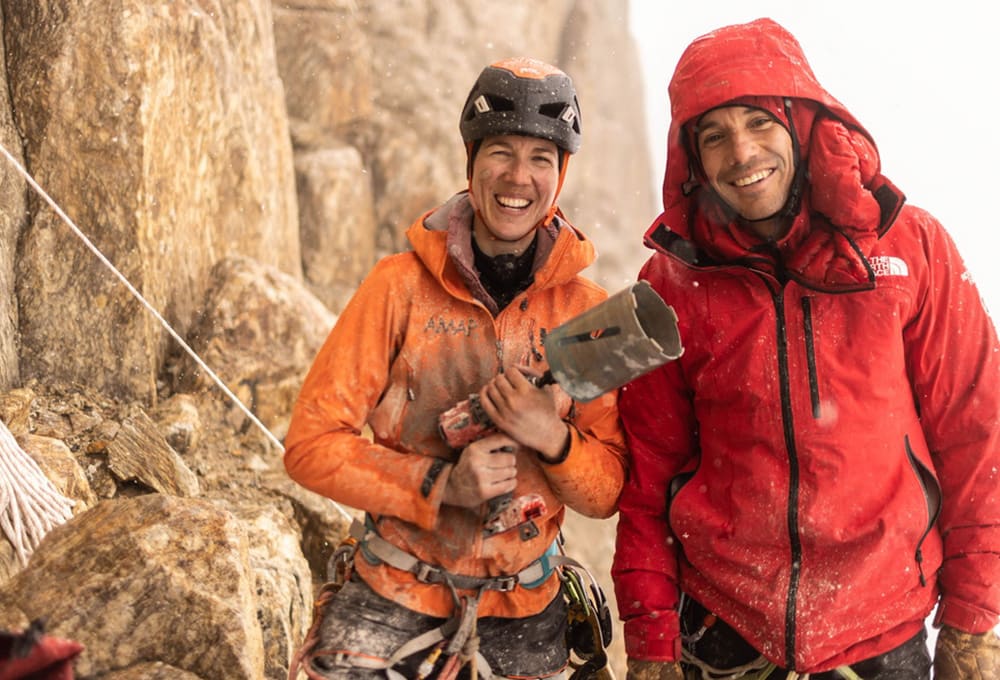
“Arctic Ascent with Alex Honnold” is a three-part documentary series produced for Disney+. It follows climber Alex Honnold, alongside climbers Hazel Findlay and Mikey Schaefer, as they attempt to scale the Ingmikortilaq seacliff in Greenland. Dr. Heidi Sevestre served as the scientific expert, providing critical insights into the effects of climate change on the region. The series, directed by Richard Ladkani and produced by Plimsoll Productions in cooperation with Malaika Pictures, features photography by Matt Pycroft, Pablo Durana, JJ Kelly, and Richard Ladkani.
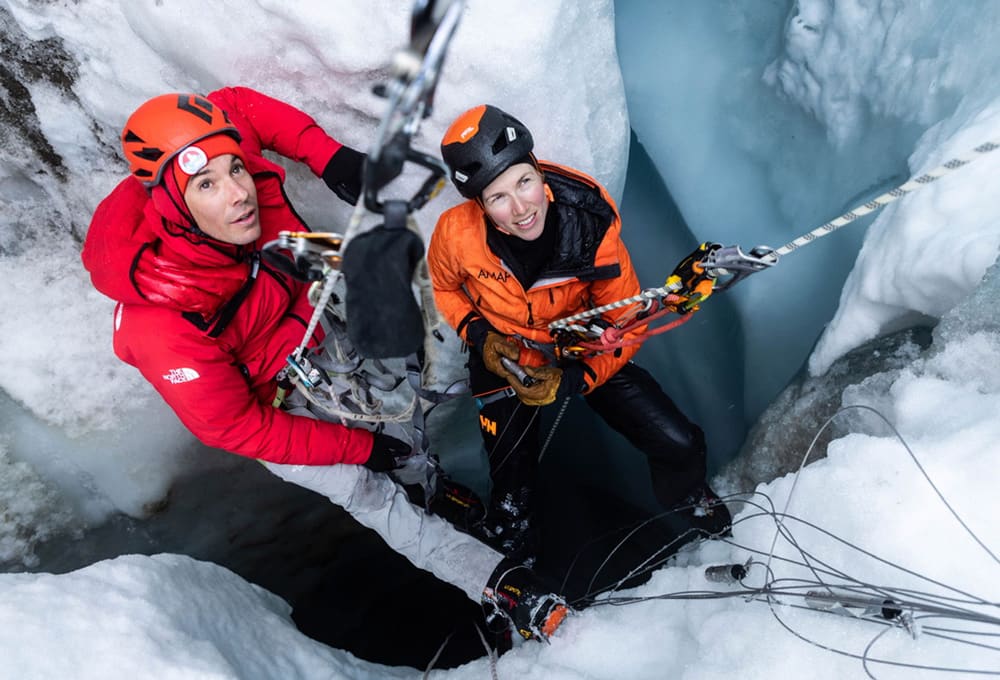
Tucked away in the lush Franschhoek Valley of South Africa, Pigcasso Farm stands as a beacon of innovation where artistry meets animal advocacy. Spearheaded by Joanne Lefson, this sanctuary is famed not just for its picturesque setting but for challenging societal views on animal intelligence, thanks in large part to its star, Pigcasso — a painting pig who has turned the art world on its head.

Pigcasso’s tale is one of remarkable transformation. Rescued from a life destined for the slaughterhouse in 2016, she quickly transitioned from mere survival to wielding brushes with aplomb. Under Lefson’s guidance, Pigcasso’s canvases burst with color, challenging the very notion of animal capabilities and promoting a shift in how we perceive and treat farm animals.
The ethos of Pigcasso Farm and its celebrated porcine artist were thrust into the spotlight during a poignant visit by conservation legend Jane Goodall and filmmaker Richard Ladkani. Although their visit was tinged with sadness due to Pigcasso’s recent passing, it also sparked an inspiring proposal: the Pigcasso Academy. Envisioned by Jane Goodall during her birthday celebrations, this proposed educational venture aims to deepen the human-animal connection through art, promising to extend Pigcasso’s legacy and intertwine creativity with conservation.

Plans are underway for a global exhibition of Pigcasso’s art, set to showcase the unlikely yet profound bond between humans and animals. More than just a display of unique artwork, this exhibition aims to celebrate Pigcasso’s life and highlight ongoing efforts at the farm to promote a sustainable and compassionate world.
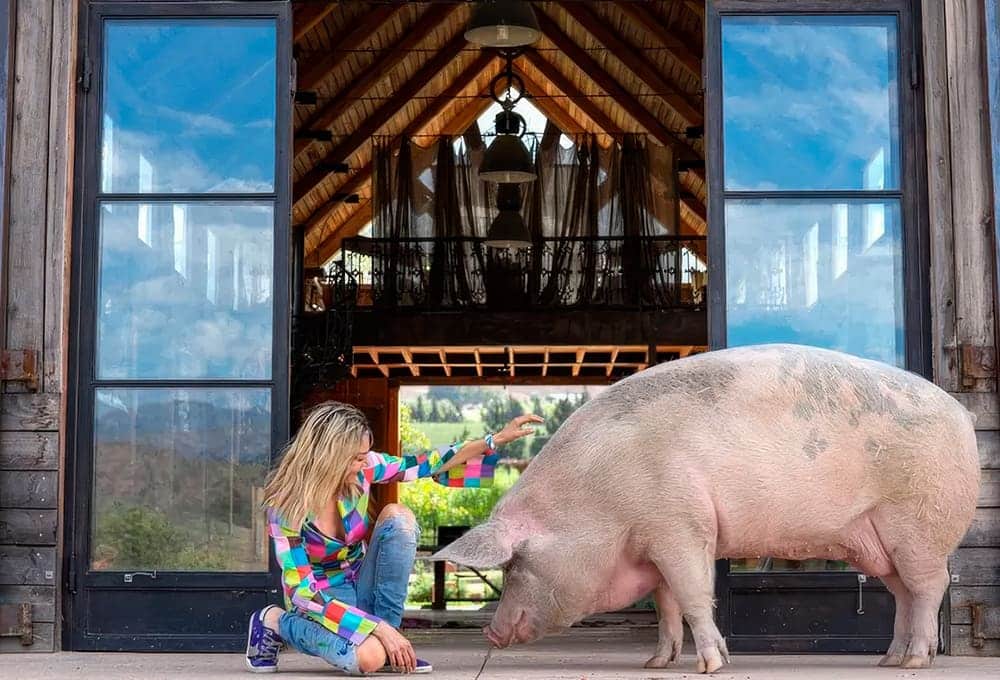
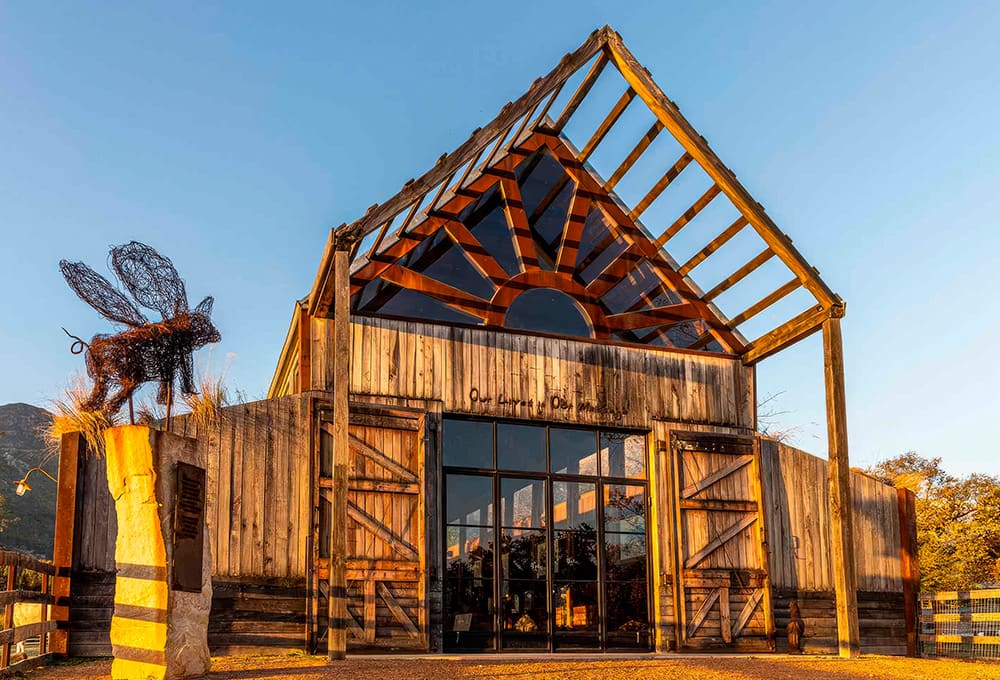
Today, Pigcasso Farm is a hub of creativity and advocacy, illustrating the transformative power of compassion and innovation in animal welfare. Each brushstroke by Pigcasso not only painted a story of hope but also challenged us to rethink our interactions with the animal world. As the farm continues to champion these ideals, it paints a compelling vision for the future—one where empathy and art coalesce to foster a more harmonious world.
As we reflect on Pigcasso’s legacy and the visionary plans for the Pigcasso Academy, the farm’s motto, “Less Meat. More Art,” resonates with a renewed urgency, urging us to contemplate how we too can leave a mark on the canvas of conservation. This whimsical yet poignant narrative invites us to consider a world where every creature has a voice, and art becomes a bridge to understanding and respect.
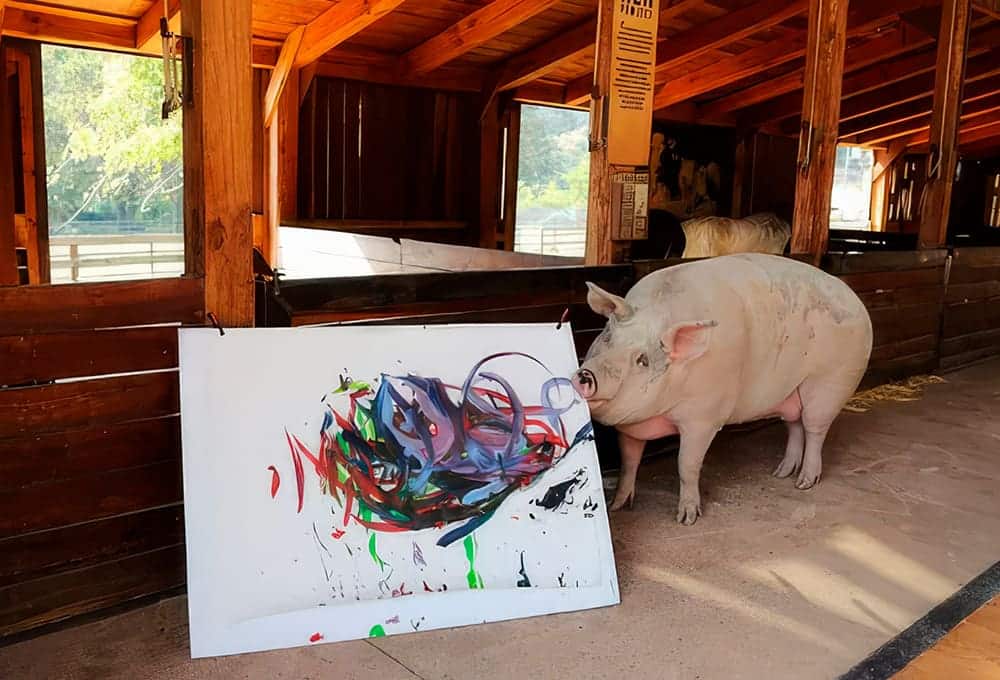
In the heart of the Amazon rainforest, a leader emerges whose name resonates with the struggle for the preservation of an ecosystem that sustains life far beyond its dense forests. Raoni Metuktire, an indigenous leader, environmentalist, and activist, has been a pivotal figure in the fight to save the Amazon rainforest. His journey from a tribal member to an international icon is not just a story of one man but a narrative of resilience, cultural identity, and global environmental activism.
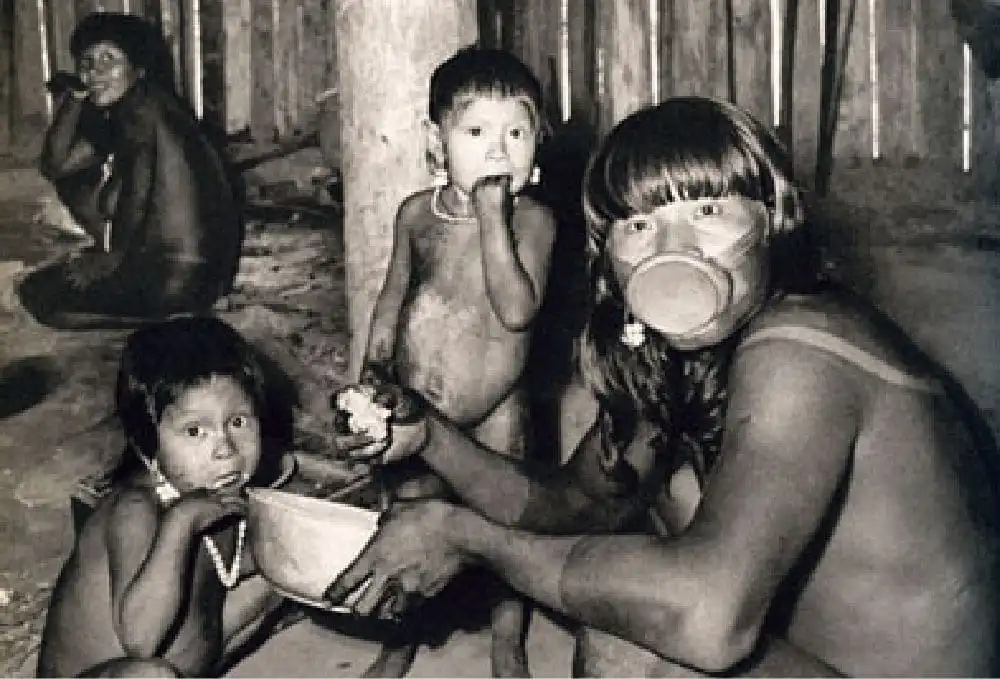
Born around the 1930s in the Brazilian state of Mato Grosso, Raoni belongs to the Kayapó tribe, known for their vibrant culture and deep connection to nature. Growing up in the undisturbed serenity of the Amazon, Raoni’s childhood was ingrained with the traditions of his tribe. From an early age, he learned the importance of living in harmony with the environment, a principle that would later define his life’s mission.
The 1950s marked a turning point in Raoni’s life when he first encountered the outside world. As the Brazilian government began to push deeper into the Amazon, bringing with it roads, settlers, and deforestation, Raoni witnessed the devastating impact on his homeland. This confrontation with the stark reality of environmental degradation ignited a fire within him to protect his ancestral lands.
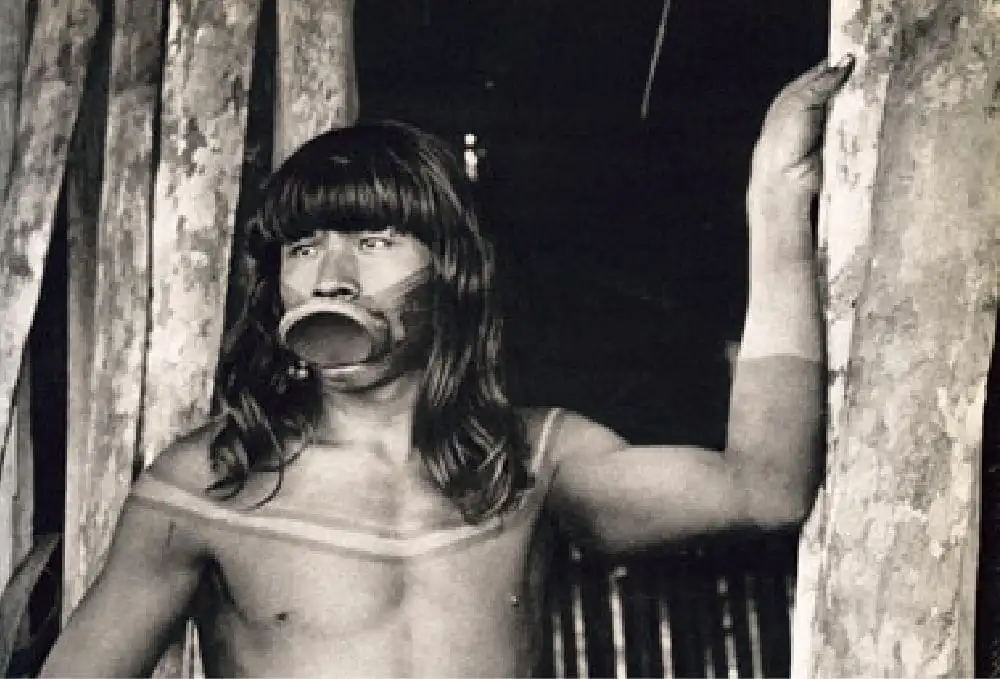
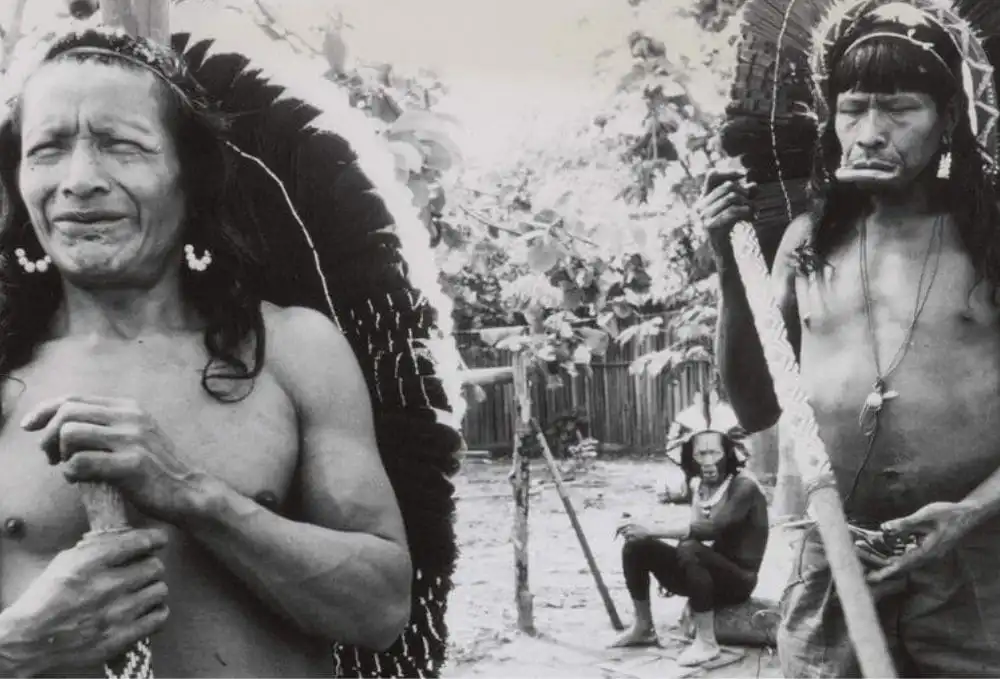
In the 1970s, as the threat to their land intensified, Raoni stepped into a leadership role within the Kayapó community. His charisma and profound understanding of the ecological and cultural significance of the Amazon made him a respected leader. He began organizing his people to resist the encroachment of loggers and ranchers, often putting himself in the frontline of these conflicts.
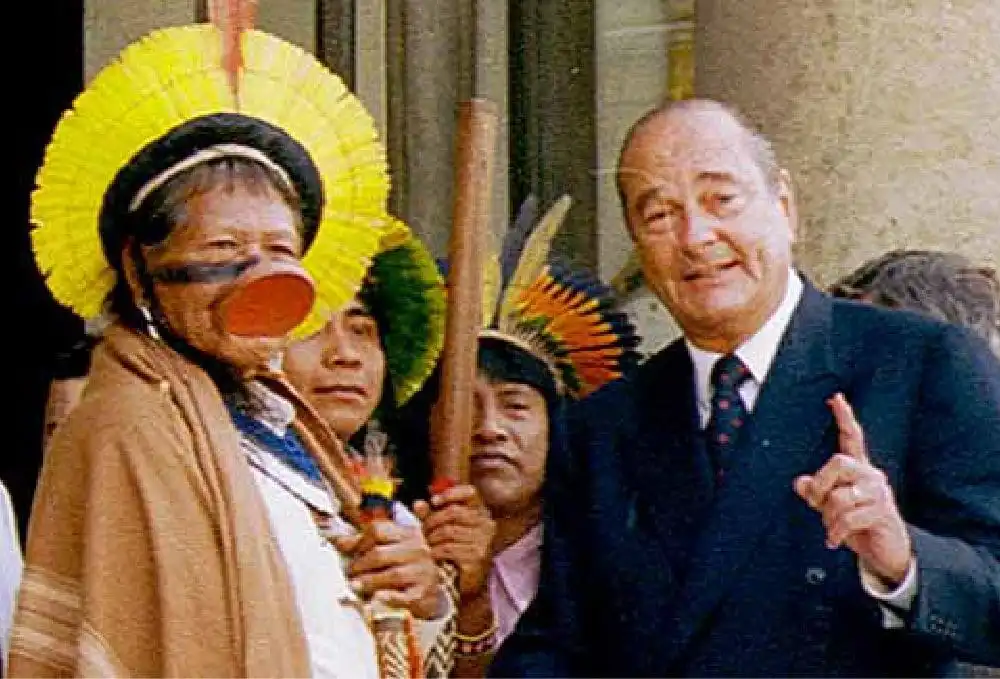
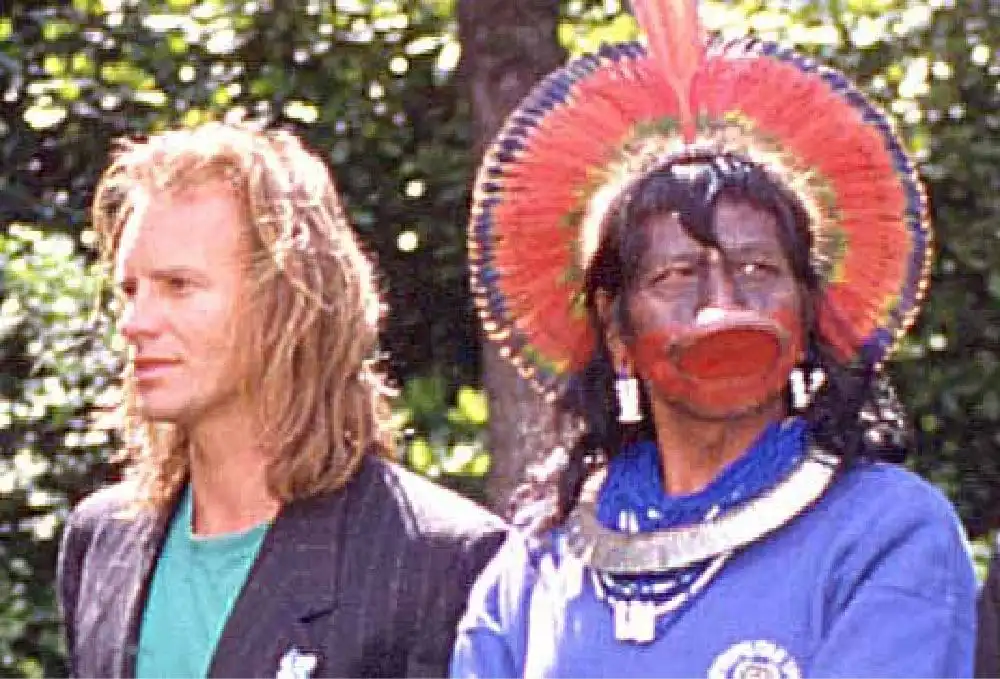
Raoni’s struggle caught the attention of the international community in the 1980s, notably after his meeting with the musician Sting in 1987. This encounter catapulted Raoni onto the global stage, making him the face of the Amazon rainforest conservation. He traveled around the world, meeting with leaders, activists, and the general public, raising awareness about the plight of the Amazon and its indigenous people.

Raoni’s campaigns focused on demarcating indigenous lands, fighting against deforestation, and opposing mega-projects like dams that threatened the Amazon. His efforts contributed significantly to the demarcation of the Kayapó territories, providing legal protection to an area spanning millions of hectares. He has been instrumental in bringing the Amazon’s issues to global forums, speaking at the United Nations and other international platforms.
Nestled within the vast, biodiversity-rich Amazon rainforest, a critical conflict unfolds—not one of violence but a profound struggle between environmental degradation and preservation. Central to this fight is Ibama, the Brazilian Institute of the Environment and Renewable Natural Resources. Tasked with enforcing Brazil’s stringent environmental laws, Ibama stands as a bulwark against the forces that threaten the integrity of the world’s largest tropical rainforest.
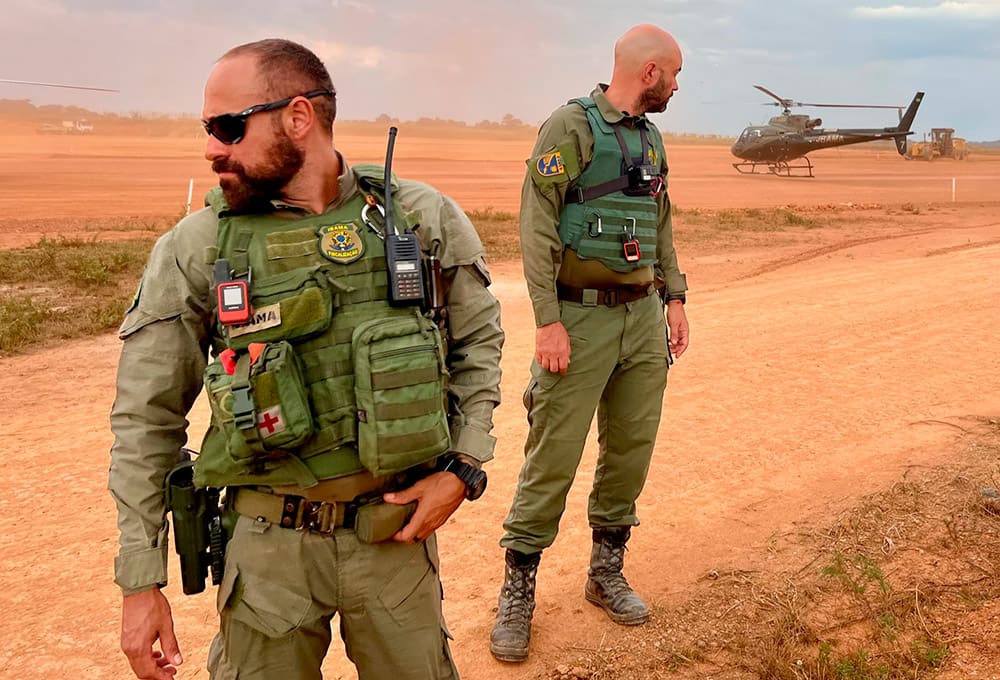
Created in 1989, Ibama emerged from the fusion of several governmental entities that once fragmented Brazil’s environmental policies. This strategic consolidation was aimed at strengthening the nation’s ability to enforce its ecological laws and wield its authority more effectively against environmental violators. Over the decades, Ibama has been pivotal in driving down rates of deforestation through stringent enforcement and innovative technology like satellite imagery and real-time data, which have become crucial tools in the agency’s efforts to combat illegal activities and deploy rapid response teams to critical areas.
The tenure of President Jair Bolsonaro marked a troubling era for Ibama, with policies that favored agribusiness interests over environmental concerns, leading to a resurgence in deforestation rates. His administration’s funding cuts and leadership changes sapped the morale and efficiency of the agency. However, the return of President Luiz Inácio Lula da Silva in 2023 heralded a new dawn. Recognizing the agency’s dilapidated state and the urgency of its mission, Lula’s government injected much-needed funds and support, empowering Ibama to reclaim its role as the guardian of Brazilian biodiversity. This revitalization is not just about restoring past capabilities but is geared towards an ambitious agenda that includes expanding protected areas and enhancing enforcement mechanisms to new heights of efficiency.
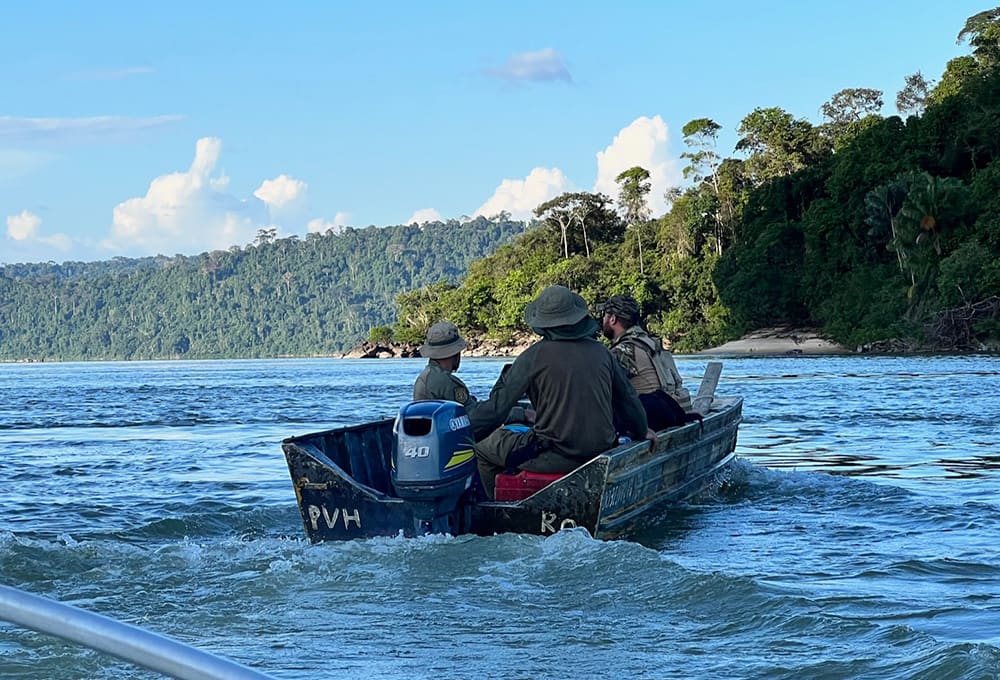
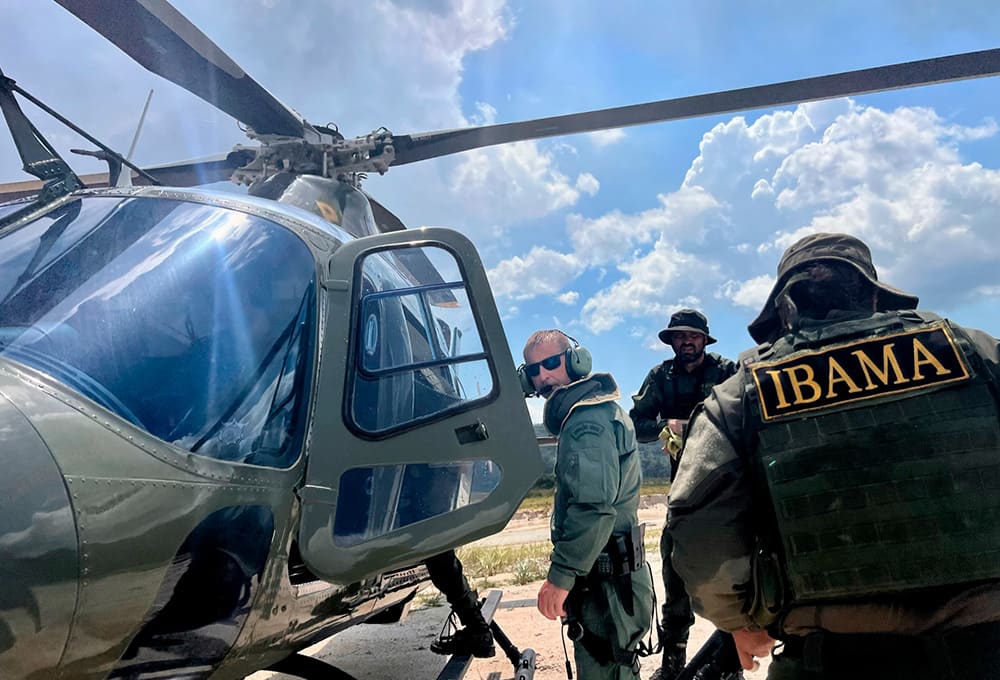
The importance of Ibama extends beyond the borders of Brazil. The Amazon is not just a treasure trove of biodiversity; it is a vital cog in the global climate system, acting as a significant carbon sink. The work that Ibama does is crucial in the global fight against climate change. As the Amazon goes, so too does the health of our planet. The story of the Ibama task force is a crucial narrative we are committed to sharing in our upcoming documentary, AMAZONIA. Faced with profit-driven and often criminal activities that wreak havoc in the Amazon, a well-equipped and trained entity like Ibama is indispensable. Its role as a protector against the forces of destruction is vital for preserving the natural beauty and ecological integrity of one of the world’s most crucial regions. This underscores why Ibama’s mission is central not only to our documentary but to global environmental conservation efforts.



